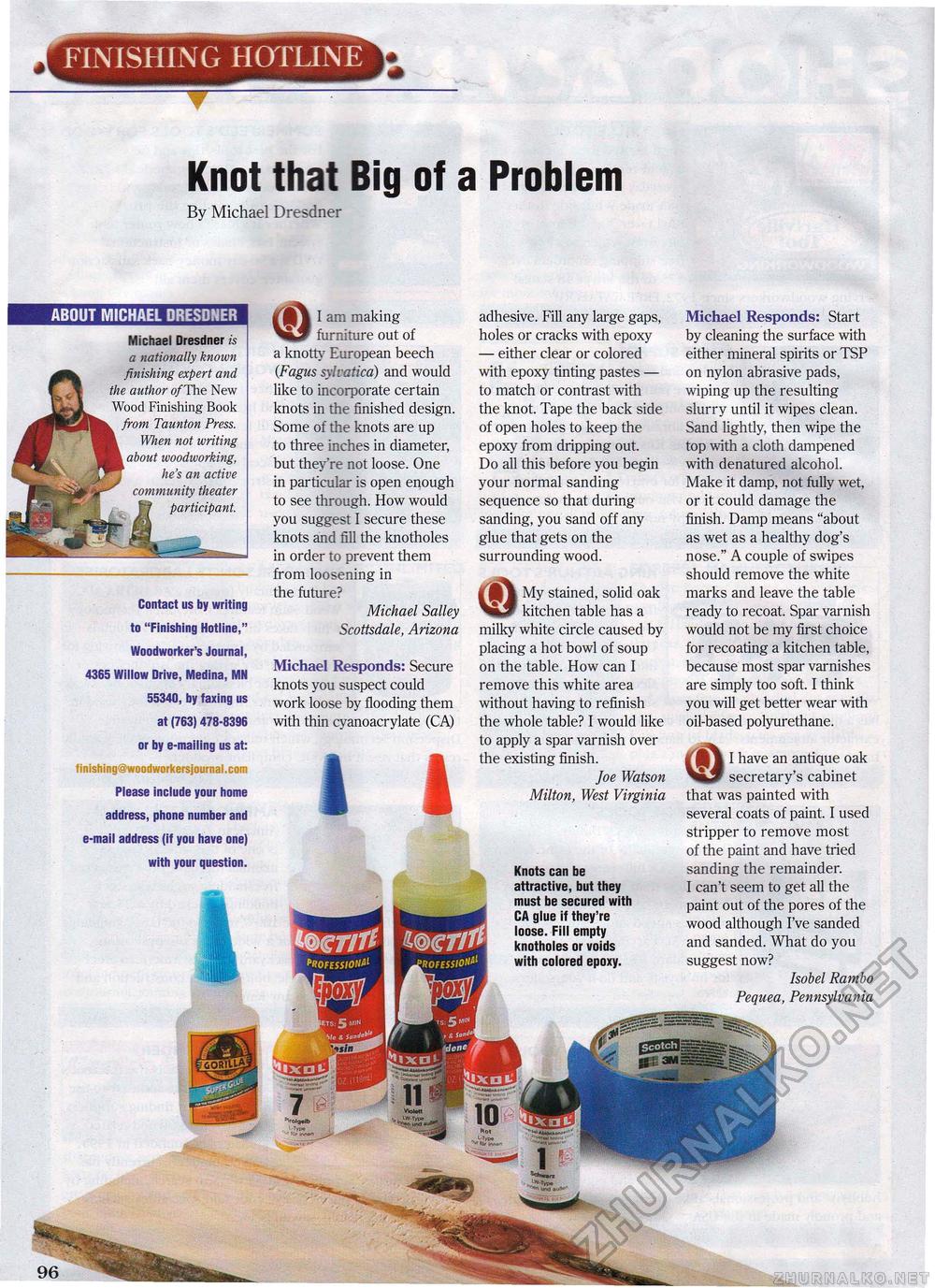Woodworker's Journal 2008-32-5, страница 96
FINISHING HOTLINE k* Knot that Big of a Problem By Michael Dresdner ABOUT MICHAEL DRESDNER Michael Dresdner is a nationally known finishing expert and the author o/The New Wood Finishing Book from Taunton Press. When not writing about woodworking, he's an active community theater participant. Contact us by writing to "Finishing Hotline," Woodworker's Journal, 4365 Willow Drive, Medina, MN 55340, by faxing us at (763) 478-8396 or by e-mailing us at: finisjiing@woodworkersjournal.com Please include your home address, phone number and e-mail address (if you have one) with your question. fnji I am making \SJf furniture out of a knotty European beech (Fagus sylvatica) and would like to incorporate certain knots in the finished design. Some of the knots are up to three inches in diameter, but they're not loose. One in particular is open enough to see through. How would you suggest I secure these knots and fill the knotholes in order to prevent them from loosening in the future? Michael Salley Scottsdale, Arizona Michael Responds: Secure knots you suspect could work loose by flooding them with thin cyanoacrylate (CA) adhesive. Fill any large gaps, holes or cracks with epoxy — either clear or colored with epoxy tinting pastes — to match or contrast with the knot. Tape the back side of open holes to keep the epoxy from dripping out. Do all this before you begin your normal sanding sequence so that during sanding, you sand off any glue that gets on the surrounding wood. i My stained, solid oak kitchen table has a milky white circle caused by placing a hot bowl of soup on the table. How can I remove this white area without having to refinish the whole table? I would like to apply a spar varnish over the existing finish. Joe Watson Milton, West Virginia Knots can be attractive, but they must be secured with CA glue if they're loose. Fill empty knotholes or voids with colored epoxy. Michael Responds: Start by cleaning the surface with either mineral spirits or TSP on nylon abrasive pads, wiping up the resulting slurry until it wipes clean. Sand lightly, then wipe the top with a cloth dampened with denatured alcohol. Make it damp, not fully wet, or it could damage the finish. Damp means "about as wet as a healthy dog's nose." A couple of swipes should remove the white marks and leave the table ready to recoat. Spar varnish would not be my first choice for recoating a kitchen table, because most spar varnishes are simply too soft. I think you will get better wear with oil-based polyurethane. | I have an antique oak Vyr secretary's cabinet that was painted with several coats of paint. I used stripper to remove most of the paint and have tried sanding the remainder. I can't seem to get all the paint out of the pores of the wood although I've sanded and sanded. What do you suggest now? Isobel Rambo Pequea, Pennsylvania |








